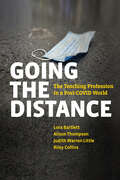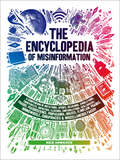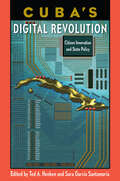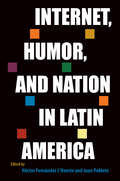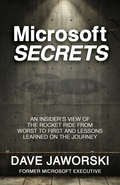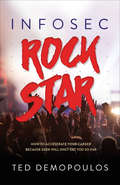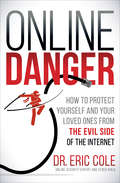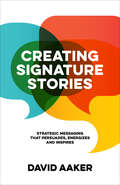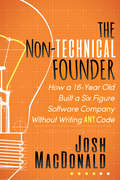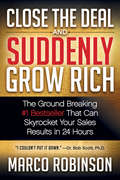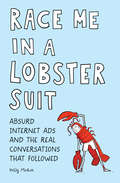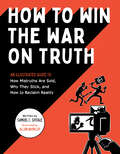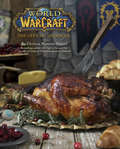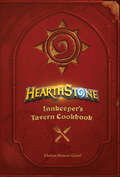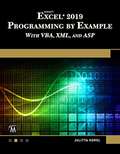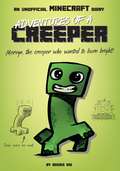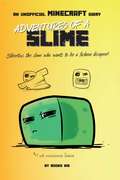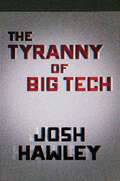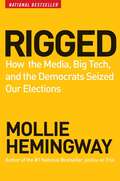- Table View
- List View
Going the Distance: The Teaching Profession in a Post-COVID World
by Lora Bartlett Judith Warren Little Alisun Thompson Riley CollinsAn unflinching yet ultimately hopeful appraisal of the workplace factors that determine career risk and resilience among K–12 teachers, informed by the lessons of the COVID-19 crisis
The Joy of Being Online All the F*cking Time (Literally): The Art Of Losing Your Mind (literally)
by Jennifer McCartneyFrom the author of The Joy of Leaving Your Sh*t All Over the Place, comes a defense of screen time. We’re inundated with advice on how to cut back on our screen time, and urged instead to embrace nature, human relationships, and being present in the moment. But has anyone actually considered those realities? They sound like a lot of work. In her new book, Jennifer McCartney gives thanks for phones, iPads, laptops, the menu tablets at Chili’s, and all screens everywhere. We can now follow a baby alpaca on a webcam, watch a viral video on TikTok, find an ex on Facebook, measure our pupillary distances, answer any question without engaging our brains—there’s so much to learn, with little to no effort. The Internet practically runs itself! We use it for work, for family, for research. We’re really, really good at being online! And that’s something to celebrate. With her usual balance of pithy wisdom, aptitude tests, and hilarious commentary, McCartney embraces our new reality. After all, as Descartes might have said, “I scroll, therefore I am.”
Your Sh*tty Family: Real Texts. Crazy Relatives.
by Uninspirational“A hysterical new collection of text exchanges from moms, dads, grandparents, and siblings that prove, well, relatives are shitty to one another.” —BroBibleYour Sh*tty Family contains all the hilarity, confusion, and frustration of a visit home without the expensive plane tickets, the tiny twin bed, or any of the misery of actually having to spend time with your family. This book, based on the popular Instagram account of the same name, features actual text-message conversations between various family members. Your Sh*tty Family presents screenshots of these conversations that are relatable to anyone who has ever taught their parents to text. Topics range from hilarious misunderstandings of slang, to children who over-share, to siblings who mercilessly make fun of each other, all organized into outrageous categories such as Momster, Dadvice, Group Chats, and more!
The Encyclopedia of Misinformation: A Compendium of Imitations, Spoofs, Delusions, Simulations, Counterfeits, Impostors, Illusions, Confabulations, Skullduggery, ... Conspiracies & Miscellaneous Fakery
by Rex Sorgatz“In an era of ‘alternative facts,’ Rex Sorgatz’s The Encyclopedia of Misinformation helps put things in perspective.” —Fast CompanyThis compendium of misinformation, deception, and self-delusion throughout history examines fakery in the context of science and advertising, humor and law, sports and video games, and beyond. Entries span eclectic topics: Artificial Intelligence, Auto-Tune, Chilean Sea Bass, Clickbait, Cognitive Dissonance, Cryptids, False Flag Operations, Gaslighting, Gerrymandering, Kayfabe, Laugh Tracks, Milli Vanilli, P.T. Barnum, Photoshopping, Potemkin Villages, Ponzi Schemes, Rachel Dolezal, Strategery, Truthiness, and the Uncanny Valley. From A to Z, this is the definitive guide to how we are tricked, and how we trick ourselves.“Occasional salty language and pop-culture references make this compendium of 300 short entries a delightful mix of high- and lowbrow.” —Booklist
Cuba’s Digital Revolution: Citizen Innovation and State Policy (Reframing Media, Technology, and Culture in Latin/o America)
by Ted A. Henken and Sara Garcia SantamariaA wide-ranging examination of the ways digital technologies are impacting Cuba’s Revolutionary project The triumph of the Cuban Revolution gave the Communist Party a monopoly over both politics and the mass media. However, with the subsequent global proliferation of new information and communication technologies, Cuban citizens have become active participants in the worldwide digital revolution. While the Cuban internet has long been characterized by censorship, high costs, slow speeds, and limited access, this volume argues that since 2013, technological developments have allowed for a fundamental reconfiguration of the cultural, economic, social, and political spheres of the Revolutionary project.The essays in this volume cover various transformations within this new digital revolution, examining both government-enabled paid public web access and creative workarounds that Cubans have designed to independently produce, distribute, and access digital content. Contributors trace how media ventures, entrepreneurship, online marketing, journalism, and cultural e-zines have been developing on the island alongside global technological and geopolitical changes.As Cuba continues to expand internet access and as citizens challenge state policies on the speed, breadth, and freedom of that access, Cuba’s Digital Revolution provides a fascinating example of the impact of technology in authoritarian states and transitional democracies. While the streets of Cuba may still belong to Castro’s Revolution, this volume argues that it is still unclear to whom Cuban cyberspace belongs. Contributors: Larry Press | Edel Lima Sarmiento | Olga Khrustaleva | Alexei Padilla Herrera | Eloy Viera Cañive | Marie Laure Geoffray | Ted A. Henken | Sara Garcia Santamaria | Anne Natvig | Carlos Manuel Rodríguez Arechavaleta | Mireya Márquez-Ramírez, Ph.D.| Abel Somohano Fernández | Rebecca Ogden | Jennifer Cearns | Walfrido Dorta | Paloma DuongA volume in the series Reframing Media, Technology, and Culture in Latin/o America, edited by Héctor Fernández L’Hoeste and Juan Carlos RodríguezPublication of the paperback edition made possible by a Sustaining the Humanities through the American Rescue Plan grant from the National Endowment for the Humanities.
Internet, Humor, and Nation in Latin America (Reframing Media, Technology, and Culture in Latin/o America)
by Juan Poblete Héctor Fernández L’HoesteHow online humor influences politics and culture in Latin America This volume is the first to provide a comprehensive Latin American perspective on the role of humor in the Spanish- and Portuguese-language internet, highlighting how the production and circulation of online humor influence the region’s relation to democracy and civil society and the production of meaning in everyday life. Several case studies consider memes, including discussions of political cartoons in Mexico and imagery that portrays the mismanagement of natural disasters in Puerto Rico. Essays on Brazil examine how memes are shared on WhatsApp by Jair Bolsonaro supporters and how the Instagram account Barbie Fascionista offers memes as political commentary. Other case studies consider video content, including the sketches of Argentinian comedian Guillermo Aquino, the short-form material of Chilean vlogger Germán Garmendia, and a satirical YouTube column created by journalists in Colombia. Contributors also offer new methodologies for studying the laughable on social media, including a model for analyzing fake Twitter accounts. Internet, Humor, and Nation in Latin America demonstrates that internet humor can generate novel means of public interaction with the political and cultural spheres and create greater expectations of governmental accountability and democratic participation. This volume shows the importance of paying serious attention to humorous digital content as part of contemporary culture.Contributors: Eva Paulina Bueno | Juan Poblete | Alberto Centeno-Pulido | Damián Fraticelli | Juan Carlos Rodríguez | Viktor Chagas | Paul Alonso | Ulisses Sawczuk da Silva | Héctor Fernández L'Hoeste | Alejandra Nallely Collado Campos | R. Sánchez-Rivera | Mélodine Sommier | Fábio Marques de Souza A volume in the series Reframing Media, Technology, and Culture in Latin/o America, edited by Héctor Fernández L’Hoeste and Juan Carlos Rodríguez Publication of this work made possible by a Sustaining the Humanities through the American Rescue Plan grant from the National Endowment for the Humanities.
Girls Just Want to Have Likes: How to Raise Confident Girls in the Face of Social Media Madness
by Laurie WolkAn educator and leadership coach teaches parents how to cut through daughters&’ addiction to social media and reclaim family connection. In today&’s age of social media, young girls are learning crucial life lessons from dubious mentors like the Kardashians and other Instagram &“celebrities.&” Many are so thoroughly addicted to social media they are uncomfortable communicating face to face. It&’s no wonder parents across the country are afraid for their daughters&’ self-esteem and ability to thrive in the real world. In Girls Just Want to Have Likes, educator and leadership coach Laurie Wolk offers smart advice on how parents can take control, communicate meaningfully with their children, and get back to raising confident capable young women. Laurie shows parents how to reclaim their roles as mentor and guide, helping their daughters unwind and decode the toxic messages social media broadcasts. By applying Laurie&’s methods, social media will start to fade into the background of your household, allowing family connection to take center stage—and letting your daughter shine.
Microsoft Secrets: An Insider’s View of the Rocket Ride from Worst to First and Lessons Learned on the Journey
by Dave JaworskiA great deal has been written about Steve Jobs and Apple. Not nearly as much has been produced about Bill Gates and Microsoft, especially in the ten-year period that Dave Jaworski was at Microsoft. Microsoft was the company that drove the hardest and built the fastest. He was there during this rapid rise to the top. Dave kept meticulous notes and took lots of photos and documented the risks taken, the dreams shared, the lessons learned, the hopes realized, and the mistakes made. Many of the issues at the time are similar to issues confronting leaders in business today. All can learn from Microsoft’s past. Dave also details several secrets—some only his family knows. Some of these secrets were known to only a handful of people within the company at a time when it went through its explosive growth period: like the secret recipe for Coca-Cola or Colonel Sanders’ chicken recipe, these secrets were literally changing the competitive landscape in the technology industry and were rewriting the business rules of the day. Understanding these secrets and the thinking behind them can provide strategic insights and advantages to professionals and their businesses. Better still, they can help them define their own secrets to accelerate them past competitors and over hurdles to success.
Infosec Rock Star: How to Accelerate Your Career Because Geek Will Only Get You So Far
by Ted DemopoulosHave you noticed that some people in infosec simply have more success than others, however they may define success? Some people are simply more listened too, more prominent, make more of a difference, have more flexibility with work, more freedom, choices of the best projects, and yes, make more money. They are not just lucky. They make their luck. The most successful are not necessarily the most technical, although technical or "geek" skills are essential. They are an absolute must, and we naturally build technical skills through experience. They are essential, but not for Rock Star level success. The most successful, the Infosec Rock Stars, have a slew of other equally valuable skills, ones most people never develop nor even understand. They include skills such as self direction, communication, business understanding, leadership, time management, project management, influence, negotiation, results orientation, and lots more . . . Infosec Rock Star will start you on your journey of mastering these skills and the journey of moving toward Rock Star status and all its benefits. Maybe you think you can’t be a Rock Star, but everyone can MOVE towards it and reap the benefits of vastly increased success. Remember, “Geek” will only get you so far . . .
Online Danger: How to Protect Yourself and Your Loved Ones from the Evil Side of the Internet
by Dr. Eric ColeA cybersecurity expert offers helpful tips and easy-to-follow instructions on how to keep you, your family, and your business safer online. The Internet is an informative, fun, and educational resource for the entire family, but it also has its own risks and dangers. From phishing to cyberbullying to identity theft, there are myriad ways you could be harmed online, often with irreparable damage. Fortunately, there are precautions everyone can take to protect themselves, their families, and their businesses—and they don&’t require technical expertise. In this book, cybersecurity expert Dr. Eric Cole, provides a layman&’s look at how to protect yourself online. Whether you&’re a parent wanting to keep your children safe online; a senior citizen who doesn&’t want to fall prey to the latest scam; a doctor, lawyer, or teacher who is responsible for safeguarding sensitive data; or simply a technology user who wants to protect themselves in cyberspace, Cole explains in plain language the many steps you can take to make your computer safer, protect your email, guard your online accounts, and more.
Creating Signature Stories: Strategic Messaging that Persuades, Energizes and Inspires
by David AakerStories are orders of magnitude which are more effective than facts at achieving attention, persuading, being remembered, and inspiring involvement. Signature stories—intriguing, authentic, and involving narratives—apply the power of stories to communicate a strategic message. Marketing professionals, coping with the digital revolution and the need to have their strategic message heard internally and externally, are realizing that a digital strategy revolves around content and that content is stories.Creating Signature Stories shows organizations how to introduce storytelling into their strategic messaging, and guides organizations to find, or even create, signature stories and leverage them over time. With case studies built into every chapter, organizations will realize the power of storytelling to energize readers, gain visibility, persuade audiences, and inspire action.
The Non-Technical Founder: How a 16-Year Old Built a Six Figure Software Company Without Writing Any Code
by Josh MacDonaldEveryone has an idea that they think is the next big thing. The problem is, it&’s probably an app or software idea and most people probably don&’t know how to code and their record for managing programmers is little to none. Even if they do know how to code, they&’re not quite sure how to get their first one thousand customers. The Non-Technical Founder walks readers through the stages of validating whether their next big thing is good, bringing the idea to life, and getting those first customers.
Close the Deal & Suddenly Grow Rich: The Ground Breaking #1 Bestseller that can Skyrocket Your Sales Results in 24 Hours
by Marco RobinsonClose the Deal & Suddenly Grow Rich is the ONLY sales book that reveals exactly WHEN to close the deal using the power of a B.R.A.N.D to transform sales results within 24 hours. Being homeless many times as a child after Marco Robinson&’s mum left his father when he was just two years old because of immense debt, he knows what it&’s like to sleep on park benches, be bullied from school to school, etc. Close the Dea & Suddenly Grow Richl is a true rags-to-riches story of someone who was willing to fight, never gave up, and became the best he could be at sales. At the heart of Marco&’s passion is giving back after his own difficult childhood. In a universal and conversational style, Marco shares his B.R.A.N.D. new concept of 21st century sales and communication technology that transforms sales results within 24 hours and catapults any working professional to the top levels of seven-figure earners at light speed!
Race Me in a Lobster Suit: Absurd Internet Ads and the Real Conversations that Followed
by Kelly MahonThis collection of prank Craigslist ads and the real email exchanges that followed is the perfect gift for fans of offbeat humor. When New York City copywriter Kelly Mahon started posting fake gig ads online as a creative outlet, she was surprised to find that there was someone interested in every bizarre job offer she dreamed up. Race Me in a Lobster Suit collects Mahon’s funniest posts, along with the improvised email exchanges with would-be cocoon knitters and lobster racers. Some correspondents became suspicious, while others seemed willing to play along. The result is good-natured comedy gold and a kind of collaborative entertainment that could only exist in the internet gig economy. Irreverent illustrations by cartoonist Graham Annable (creator of the Harvey Award nominated Grickle comics) ensure that this small book offers outsize laughs. A quick, hilarious read, Race Me in a Lobster Suit is perfect for anyone who needs a bit of absurdity to brighten their day.
How to Win the War on Truth: An Illustrated Guide to How Mistruths Are Sold, Why They Stick, and How to Reclaim Reality
by Samuel C. SpitaleMade to Stick by Chip Heath meets Thing Explainer by Randall Munroe in this illustrated guide to navigating today&’s post-truth landscape, filled with real-world examples of disinformation campaigns.The average person receives 4,000 to 10,000 media messages a day. It&’s no wonder we struggle to separate the news from the noise and fact from fiction--but in these unprecedented times, it&’s essential to democracy that we do. For anyone struggling to figure out how to live--and vote--their values, How to Win the War on Truth is here to help. You&’ll learn: • The history of propaganda, from Edward Bernays to Fox News • Why simple messages are so powerful • How social messaging creates unconscious biases • Who profits from propaganda • How propaganda is manufactured and delivered directly to you Filled with real-world examples of disinformation campaigns that impact every citizen and clever illustration, How to Win the War on Truth will help you see the world with clear eyes for the first time.
World of Warcraft: The Official Cookbook (World Of Warcraft Ser.)
by Chelsea Monroe-CasselNew York Times–Bestselling Author: Prepare a feast fit for a warchief with this official cookbook inspired by Blizzard Entertainment’s hit online game.Presenting delicacies favored by the Horde and the Alliance alike, this authorized cookbook teaches apprentice chefs how to conjure up a menu of food and drink from across the realm of Azeroth.Featuring food pairings for each dish, ideas for creating your own Azerothian feasts, and tips on adapting meals to specific diets, this otherworldly culinary guide offers something for everyone. The aromatic Spiced Blossom Soup is perfect for plant-loving druids, and orcs will go berserk for the fall-off-the-bone Beer-Basted Boar Ribs. With alternatives to the more obscure ingredients—just in case you don’t have Chimaerok Chops lying around—this comprehensive cookbook will ensure that you have no trouble staying Well Fed. Each chapter features dishes at a variety of skill levels for a total of more than one hundred easy-to-follow recipes for food and brews, including: Ancient Pandaren Spices Fel Eggs and Ham Mulgore Spice Bread Dragonbreath Chili Graccu’s Homemade Meat Pie Bloodberry Tart Greatfather’s Winter Ale Whether you’re cooking for two or revitalizing your raid group for a late-night dungeon run, World of Warcraft: The Official Cookbook brings the flavors of Azeroth to life.“The cookbook instilled in me not only a love for the craft of cooking, but a newfound love for the game.” —PC Gamer
Hearthstone: Innkeeper's Tavern Cookbook
by Chelsea Monroe-CasselSheathe your sword and summon more than fifty delicious bites and cocktails inspired by the smash-hit game—perfect for any Fireside Gathering.From the bestselling author of World of Warcraft: The Official Cookbook and A Feast of Ice and Fire: The Official Game of Thrones Companion Cookbook comes a new collection of delicious recipes.With the Innkeeper’s Tavern Cookbook, fans will unlock Hearthstone-inspired eats, cocktails, and mocktails. A replica of Harth Stonebrew’s own private cookbook, this delightful guide contains more than fifty all-new recipes perfect for any Fireside Gathering or game night, from Sarge’s Easy Mac & Cheese to Medivh’s favorite martini—and, of course, funnel cake. Complete with mouthwatering color photos and Harth’s personal notations, recipe modifications, and reflections, the Innkeeper’s Tavern Cookbook brings the world of Hearthstone to life like never before. Hearthstone is a fast-paced digital card game where players sling spells, summon minions, and command powerful heroes in duels of epic strategy. Featuring familiar characters from the Warcraft® universe, Hearthstone has won over legions of fans with its humor and deceptively simple gameplay.
Microsoft Excel 2019 Programming by Example: With VBA, XML, and ASP
by Julitta KorolUpdated for Excel 2019 and based on the bestselling editions from previous versions, Microsoft Excel 2019 Programming by Example with VBA, XML and ASP is a practical, how-to book on Excel programming, suitable for readers already proficient with the Excel user interface (UI). The book includes companion files with all of the source code and figures used in the text (available with Amazon proof of purchase by writing to the publisher at info@merclearning.com.) <p><p> If you are looking to automate Excel routine tasks, this book will progressively introduce you to programming concepts via numerous illustrated hands-on exercises. More advanced topics are demonstrated via custom projects. From recording and editing a macro and writing VBA code to working with XML documents and using Classic ASP pages to access and display data on the Web, this book takes you on a programming journey that will change the way you work with Excel. The book provides information on performing automatic operations on files, folders, and other Microsoft Office applications. It also covers proper use of event procedures, testing and debugging, and guides you through programming advanced Excel features such as PivotTables, PivotCharts, and the Ribbon interface.
Adventures of a Creeper: An Unofficial Minecraft Diary (Minecraft #1)
by Books KidIn this humorous, illustrated chapter-book diary, you’ll find out that life is not always a blast—even if you’re an exploding Minecraft creeper!Minecraft creeper Mervyn Miles has just one goal: to win the annual Creeper Combustion and Confusion Competition so his father will finally be proud of him. But, between family and school pressures and bullying by arch-rival Wesley, things turn out to be more difficult than Mervyn could have ever imagined. Read all about this little green monster’s quest to become the biggest exploder in the entire Overworld in this humorous, unofficial Minecraft chapter-book diary with black-and-white illustrations.
Adventures of a Slime: An Unofficial Minecraft Diary (Minecraft #2)
by Books KidA Simon & Schuster eBook. Simon & Schuster has a great book for every reader.
Screen Time: Photography and Video Art in the Internet Age
by Richard Rinehart and Phillip ProdgerPublished on the occasion of the art exhibition Screen Time: Photography and Video Art in the Internet Age, this catalog features a selection of leading international artists who engage with and critique the role of media in contemporary society. Their work demonstrates what has become known as post-internet artistic practices—art that may or may not be made for the internet but nevertheless acknowledges online culture as an omnipresent influence, inseparable from contemporary social conditions. They ask what it means to be a photographer when everyone is an Instagram influencer; what it means to make video art when everyone is a TikTok video star; and how to deliver meaningful social commentary in the age of the meme. The exhibition and accompanying catalog showcase artwork by N. Dash, Nathalie Djurberg, Marcel Dzama, Peter Funch, Cyrus Kabiru, William Kentridge, Christian Marclay, Marilyn Minter, Vik Muniz, Otobong Nkanga, Erwin Olaf, Robin Rhode, Vee Speers, Mary Sue, Puck Verkade, Huang Yan. Published by Bucknell University Press for the Samek Art Museum. Distributed worldwide by Rutgers University Press.
Become a Chess Champion: Learn the Basics from a Pro
by Neon Squid James Canty IIIKids will learn how to master the basics of the classic board game in this fun beginner’s guide from professional chess player James Canty III.Become a Chess Champion is structured like a chess course, with knowledge carefully introduced as readers turn the pages – assisted by hilarious chess pieces illustrated by Brian Lambert. The emphasis is on fun: James Canty III uses mini games and chess puzzles to teach important concepts and avoid overwhelming beginners. Kids will learn key skills like how to play the perfect opening and trick their opponents to bring about checkmate. By the end of the book readers should be able to confidently take on their parents, guardians or grandparents in a competitive game of chess!Become a Chess Champion also introduces kids to the wonderful world of chess. They’ll meet the chess player who didn’t lose a game for 30 years, the priest who invented the folding chess board, and the astronauts on the International Space station who had a chess match with people back on Earth!As well as being great fun, chess also helps kids develop key skills such as strategising, patience, and logic, and helps them excel in school subjects such as mathematics.The cover features gold foil, making this book the perfect gift. Check it out!
The Tyranny of Big Tech
by Josh HawleyThe reign of Big Tech is here, and Americans’ First Amendment rights hang by a keystroke. Amassing unimaginable amounts of personal data, giants like Google, Facebook, Amazon, and Apple—once symbols of American ingenuity and freedom—have become a techno-oligarchy with overwhelming economic and political power. Decades of unchecked data collection have given Big Tech more targeted control over Americans’ daily lives than any company or government in the world. <P><P> In The Tyranny of Big Tech, Senator Josh Hawley of Missouri argues that these mega-corporations—controlled by the robber barons of the modern era—are the gravest threat to American liberty in decades. To reverse course, Hawley argues, we must correct progressives’ mistakes of the past. <P><P>That means recovering the link between liberty and democratic participation, building an economy that makes the working class strong, independent, and beholden to no one, and curbing the influence of corporate and political elites. <P><P>Big Tech and its allies do not deal gently with those who cross them, and Senator Hawley proudly bears his own battle scars. But hubris is dangerous. The time is ripe to overcome the tyranny of Big Tech by reshaping the business and legal landscape of the digital world. <P><P><b>A New York Times Bestseller</b>
Rigged: How the Media, Big Tech, and the Democrats Seized Our Elections
by Mollie HemingwayFROM THE AUTHOR OF THE #1 NATIONAL BESTSELLER JUSTICE ON TRIAL Stunned by the turbulence of the 2020 election, millions of Americans are asking the forbidden question: what really happened? It was a devastating triple punch. Capping their four-year campaign to destroy the Trump presidency, the media portrayed a Democratic victory as necessary and inevitable. Big Tech, wielding unprecedented powers, vaporized dissent and erased damning reports about the Biden family's corruption. And Democratic operatives, exploiting a public health crisis, shamelessly manipulated the voting process itself. Silenced and subjected, the American people lost their faith in the system. RIGGED is the definitive account of the 2020 election. Based on Mollie Hemingway's exclusive interviews with campaign officials, reporters, Supreme Court justices, and President Trump himself, it exposes the fraud and cynicism behind the Democrats' historic power-grab. Rewriting history is a specialty of the radical left, now in control of America's political and cultural heights. But they will have to contend with the determination, insight, and eloquence of Mollie Hemingway. RIGGED is a reminder for weary patriots that truth is still the most powerful weapon. The stakes for our democracy have never been higher.
Skyrocket Your Business with Social Media Branding: Personalize, Increase, and Grow Demand for your Brand
by Isis BradfordSkyrocket Your Business with Social Media Branding"As a next-generation leader and trusted voice in the digital arena, Isis Bradford provides the blueprint to take your brand from the ground floor all the way to the top.” —Pauleanna Reid, founder of WritersBlok and nationally published journalistSkyrocket Your Business with Social Media Branding guides you on how to start and build your brand and business. Through social media branding and selling digital products, you can scale your business to be extremely lucrative—let’s get started!Grow your business and your brand. Social media strategist and content expert Isis Bradford created this guide book to help small business owners acclimate to social media branding and promoting digital products and goods. Learn how to utilize an instagram following to your advantage without a business development manager using Bradford’s The P.A.I.D. Equation method. P.A.I.D stands for how to (P)personalize the experience of your audience, bring (A)awareness to your business daily, create an (I)intimate relationship with those who are ready to shop from you, and increase (D)demand for purchases!Social media and business strategies made simple. Engage with your audience using updated strategies on social media branding. Learn how to personalize intended experiences for your audience, build brand awareness daily on social media, and inspire your audience to purchase any of your digital products and courses without famous influencers. Inside, you’ll find:Marketing and social media branding guidelines to grow your businessBusiness strategies to inspire purchases of your digital products and coursesAn online business book taking digital serial entrepreneurs to the next levelIf you liked Hook Point, The Nuclear Effect, or The Fearless Woman's Guide to Starting a Business, you’ll love Skyrocket Your Business with Social Media Branding.
